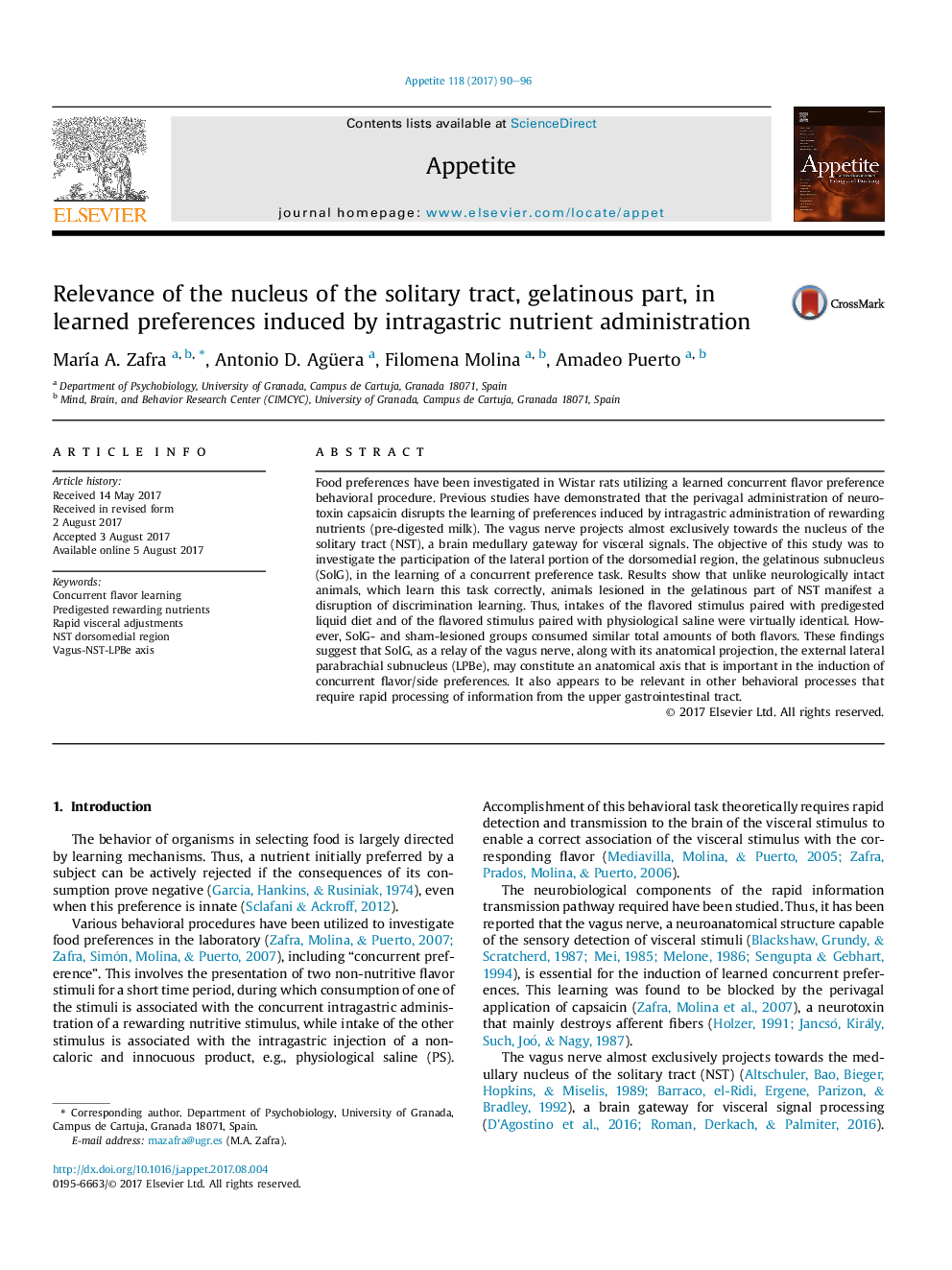| Article ID | Journal | Published Year | Pages | File Type |
|---|---|---|---|---|
| 5044226 | Appetite | 2017 | 7 Pages |
Food preferences have been investigated in Wistar rats utilizing a learned concurrent flavor preference behavioral procedure. Previous studies have demonstrated that the perivagal administration of neurotoxin capsaicin disrupts the learning of preferences induced by intragastric administration of rewarding nutrients (pre-digested milk). The vagus nerve projects almost exclusively towards the nucleus of the solitary tract (NST), a brain medullary gateway for visceral signals. The objective of this study was to investigate the participation of the lateral portion of the dorsomedial region, the gelatinous subnucleus (SolG), in the learning of a concurrent preference task. Results show that unlike neurologically intact animals, which learn this task correctly, animals lesioned in the gelatinous part of NST manifest a disruption of discrimination learning. Thus, intakes of the flavored stimulus paired with predigested liquid diet and of the flavored stimulus paired with physiological saline were virtually identical. However, SolG- and sham-lesioned groups consumed similar total amounts of both flavors. These findings suggest that SolG, as a relay of the vagus nerve, along with its anatomical projection, the external lateral parabrachial subnucleus (LPBe), may constitute an anatomical axis that is important in the induction of concurrent flavor/side preferences. It also appears to be relevant in other behavioral processes that require rapid processing of information from the upper gastrointestinal tract.
